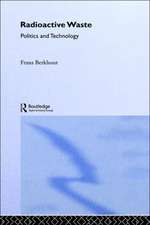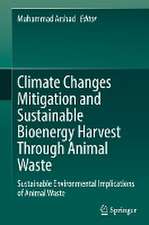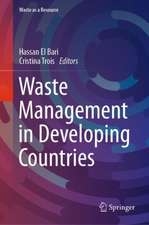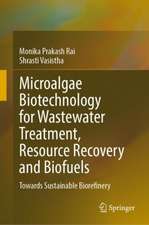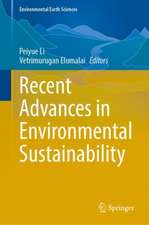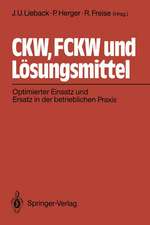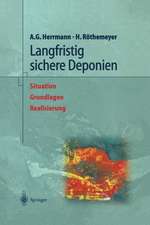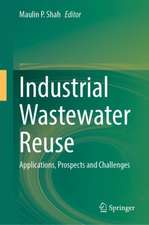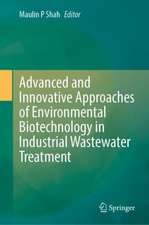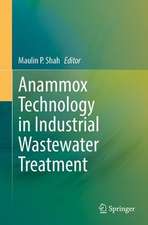Risk Management of Chemicals in the Environment: Nato - Challenges of Modern Society, cartea 12
Editat de Hans M. Seip, Anders B. Heibergen Limba Engleză Paperback – 18 mar 2012
Din seria Nato - Challenges of Modern Society
-
 Preț: 401.03 lei
Preț: 401.03 lei -
 Preț: 421.05 lei
Preț: 421.05 lei - 18%
 Preț: 1246.63 lei
Preț: 1246.63 lei - 5%
 Preț: 365.10 lei
Preț: 365.10 lei - 18%
 Preț: 1257.83 lei
Preț: 1257.83 lei - 5%
 Preț: 406.94 lei
Preț: 406.94 lei - 18%
 Preț: 1258.46 lei
Preț: 1258.46 lei -
 Preț: 418.32 lei
Preț: 418.32 lei - 5%
 Preț: 1418.48 lei
Preț: 1418.48 lei - 18%
 Preț: 953.20 lei
Preț: 953.20 lei -
 Preț: 379.68 lei
Preț: 379.68 lei -
 Preț: 418.76 lei
Preț: 418.76 lei - 18%
 Preț: 1249.14 lei
Preț: 1249.14 lei - 18%
 Preț: 957.75 lei
Preț: 957.75 lei -
 Preț: 434.34 lei
Preț: 434.34 lei -
 Preț: 398.15 lei
Preț: 398.15 lei -
 Preț: 424.15 lei
Preț: 424.15 lei -
 Preț: 405.66 lei
Preț: 405.66 lei -
 Preț: 430.69 lei
Preț: 430.69 lei -
 Preț: 430.47 lei
Preț: 430.47 lei -
 Preț: 391.99 lei
Preț: 391.99 lei
Preț: 388.34 lei
Nou
Puncte Express: 583
Preț estimativ în valută:
74.33€ • 80.77$ • 62.48£
74.33€ • 80.77$ • 62.48£
Carte tipărită la comandă
Livrare economică 21 aprilie-05 mai
Preluare comenzi: 021 569.72.76
Specificații
ISBN-13: 9781468456066
ISBN-10: 1468456067
Pagini: 240
Ilustrații: XII, 227 p.
Dimensiuni: 178 x 254 x 13 mm
Greutate: 0.42 kg
Ediția:Softcover reprint of the original 1st ed. 1989
Editura: Springer Us
Colecția Springer
Seria Nato - Challenges of Modern Society
Locul publicării:New York, NY, United States
ISBN-10: 1468456067
Pagini: 240
Ilustrații: XII, 227 p.
Dimensiuni: 178 x 254 x 13 mm
Greutate: 0.42 kg
Ediția:Softcover reprint of the original 1st ed. 1989
Editura: Springer Us
Colecția Springer
Seria Nato - Challenges of Modern Society
Locul publicării:New York, NY, United States
Public țintă
ResearchCuprins
1: Pilot Study of Risk Management of Chemicals in the Environment: An Introduction.- 1 Background of the Pilot Study.- 2 Components of Risk Assessment and Risk Management.- 3 Quantitative Decision Analysis Techniques.- 4 Public Acceptability.- 5 Outcome of the Pilot Study.- 6 Acknowledgements.- 7 References.- 2: Quantification of Health Risk Due to Chemicals: Methods and Uncertainties.- 1 Introduction.- 2 Methods of Determining Dose-Response Relationships.- 3 Uncertainties in Health Risk Quantification.- 4 Conclusion.- 5 References.- 3: Methods for Assessing the Risk of Environmental Contamination.- 1 Introduction.- 2 Environmental Risk Analysis.- 3 Examples of a simplified approach.- 4 Conclusions.- 5 References.- 4: Methods Used in the United States for the Assessment and Management of Health Risk Due to Chemicals.- 1 Introduction.- 2 National Research Council, 1983.- 3 Committee on Science and Technology, 1983.- 4 Office of Science and Technology Policy, 1985.- 5 United States Department of Health and Human Services, 1985.- 6 United States Environmental Protection Agency, 1986.- 7 Example of a Recent EPA Risk Assessment.- 8 List of Abbreviations.- 9 References.- 5: Assessment of Ecologic Risks Related to Chemical Exposure: Methods and Strategies Used in the United States.- >1 Current Status.- 2 Future Directions.- 3 Ecological Risk Assessment Guidelines.- 4 References.- 6: Attitudes toward Risk-Benefit Analysis for Managing Effects of Chemical Exposures.- 1 Introduction.- 2 Data and Methods.- 3 Findings.- 4 Conclusion.- 5 Acknowledgement.- 6 Appendix.- 7 References.- 7: Modelling Behaviour of Pollutants in Soil for Risk Assessment Purposes.- 1 Soil Dispersed Contaminants: Behaviour and Risk for Human Exposure.- 2 Processes Occurring in Soil: Theoretical Basis for Modelling.- 3 An Empirical Model for the Calculation of Mobility of Chemicals in Soil.- 4 Conclusion.- 5 Acknowledgements.- 6 References.- 8: Environmental and Health Impact Assessment of Soil Pollutants. The Seveso Accident as a Typical Example.- 1 Introduction.- 2 The Seveso accident.- 3 Environmental Persistence of TCDD.- 4 Vertical Distribution of TCDD in soil.- 5 Plant Contamination and Soil-to-Plant Transfer of TCDD.- 6 Soil-to-Air Transfer of TCDD Contaminated Dust.- 7 Discussion and Conclusions.- 8 References.- 9: Mathematical and Biological Uncertainties in the Assessment of a Permissible Blood Lead Concentration.- 1 Introduction.- 2 Uncertainties in the Use of NOAEL.- 3 Mathematical Uncertainty.- 4 Biological Uncertainty.- 5 From Risk Assessment to Risk Management.- 6 Acknowledgements l.- 7 References l.- 10: Use of Formal Methods in Evaluating Countermeasures to Coastal Water Pollution. A Case Study of the Kristiansand Fjord, Southern Norway.- 1 Introduction.- 2 The Kristiansand fjord — A Case of Marine Pollution.- 3 Analysis of Countermeasures — Initial Tasks.- 4 Identification of Pollution Control Actions.- 5 Effects of Control Actions.- 6 Valuation of a Total Cleanup by Use of an Economic Method.- 7 Valuation of Pollution Control Actions by Use of “SMART”.- 8 Summary and Conclusions.- 9 Acknowledgement.- 10 References.- 11: Abatement of Air Pollution in Oslo.- 1 Introduction.- 2 Methodological Approach.- 3 Countermeasures.- 4 Objectives and Attributes.- 5 Estimating the Impact of the Countermeasures.- 6 Valuation of the Impact of the Countermeasures.- 7 Results.- 8 Dealing with Uncertainties.- 9 Sensitivity Analysis.- 10 Closing Remarks.- 11 Acknowledgement.- 12 References.- 12: Summary, Conclusions and Recommendations.- 1 Introduction.- 2 Summary ofthe Individual Chapters in the Report.- 3 Conclusions and Recommendations.- APPENDIX A: Names and addresses of Study Group members.- APPENDIX B: Names and addresses of recipients of CCMS Fellowships who contributed to the Pilot Study.- APPENDIX C: Study Group programme.- APPENDIX D: Work done by recipients of CCMS Fellowships.- APPENDIX E: Questionnaire — Willingness-to-pay survey.- APPENDIX F: Questionnaire — SMART study.- APPENDIX G: Summary report of the Pilot Study on Risk Management of Chemicals in the Environment.

